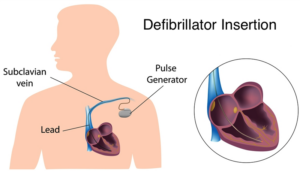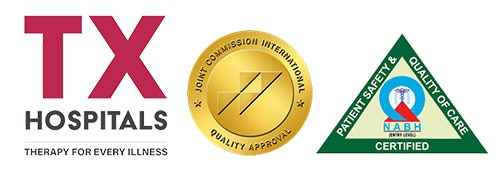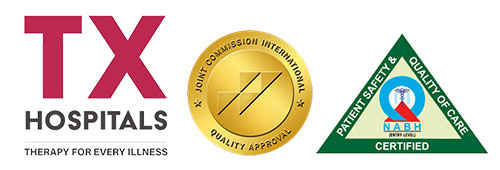ICD Surgery in Hyderabad

ICD Implantation

Cardiac Defibrillator Placement
- The Surgical Procedure: We specialize in performing minimally invasive surgeries to implant ICDs.
- Anesthesia and Incision: Patients are placed under general anesthesia, and a small incision is made to access the chest area.
- Device Placement: The ICD is positioned beneath the skin, typically near the collarbone or just below the ribcage.
- Lead Insertion: Leads, thin wires, are carefully threaded through veins to connect the ICD to the heart.
- Testing and Closure: The device is tested to ensure proper functioning, and the incision is closed with sutures or surgical staples.
Benefits of Implantable Cardioverter Defibrillators (ICDs)
- Life-Saving Technology: ICDs are designed to detect and treat dangerous heart rhythms, such as ventricular fibrillation or ventricular tachycardia.
- Immediate Intervention: In case of a life-threatening arrhythmia, the ICD delivers an electrical shock to restore a normal heart rhythm.
- Prevention of Sudden Cardiac Arrest: By constantly monitoring heart activity, ICDs can effectively prevent sudden cardiac arrest and provide peace of mind to patients and their loved ones.
- Customized Programming: Each ICD is tailored to an individual’s specific needs, ensuring appropriate therapy based on their heart’s unique electrical patterns.
Preparing for Implantable Cardioverter Defibrillator (ICD) Surgery
- Medical Evaluation: Our experienced team conducts a thorough evaluation to determine if an ICD is the best treatment option for you.
- Preoperative Instructions: You will receive detailed instructions regarding fasting, medications, and any necessary tests prior to the surgery.
- Arranging Support: It is important to have someone accompany you on the day of the procedure and assist with your postoperative care.
More about Implantable Cardioverter Defibrillators (ICDs)
- Battery Life and Replacement: ICDs have long-lasting batteries that typically last several years. When the battery nears depletion, a simple outpatient procedure is performed to replace it.
- Routine Monitoring and Follow-up: Regular check-ups and monitoring are essential to ensure the ICD is functioning optimally and to make any necessary adjustments.
- Lifestyle Considerations: Most activities can be resumed after ICD implantation, but certain precautions may be advised, such as avoiding strong magnetic fields and undergoing additional security screening at airports.
- At TX Hospitals, we prioritize the health and well-being of our patients, offering state-of-the-art solutions like Implantable Cardioverter Defibrillators (ICDs) to promote cardiac health. With our skilled team of healthcare professionals, we are committed to providing the highest quality care throughout your journey. Contact us today to schedule a consultation or learn more about ICDs and their life-saving potential in preventing sudden cardiac arrest.
Frequently Asked Questions (FAQs)
An Implantable Cardioverter Defibrillator (ICD) is a small electronic device that is implanted under the skin, typically near the collarbone. It continuously monitors the heart’s rhythm and delivers electrical shocks or pacing when abnormal or life-threatening heart rhythms are detected.
ICD implantation is performed to treat or prevent life-threatening arrhythmias (abnormal heart rhythms) such as ventricular tachycardia or ventricular fibrillation. It is commonly recommended for individuals who have experienced or are at high risk of sudden cardiac arrest or cardiac arrhythmias.
The ICD implantation procedure is usually performed under local anesthesia and conscious sedation. A small incision is made near the collarbone, and leads (thin wires) are guided through the blood vessels into the heart chambers. These leads connect to the ICD, which is then placed under the skin. The procedure generally takes about 1-2 hours to complete.
ICD implantation is considered a minor surgical procedure. It does involve creating a small incision and placing leads into the heart, but it is less invasive compared to open-heart surgery. Most patients can go home the same day or the next day after the procedure.
Once the ICD is implanted, you may feel a small lump or bulge under the skin where the device is located. However, the ICD is generally well-tolerated and should not cause significant discomfort.







